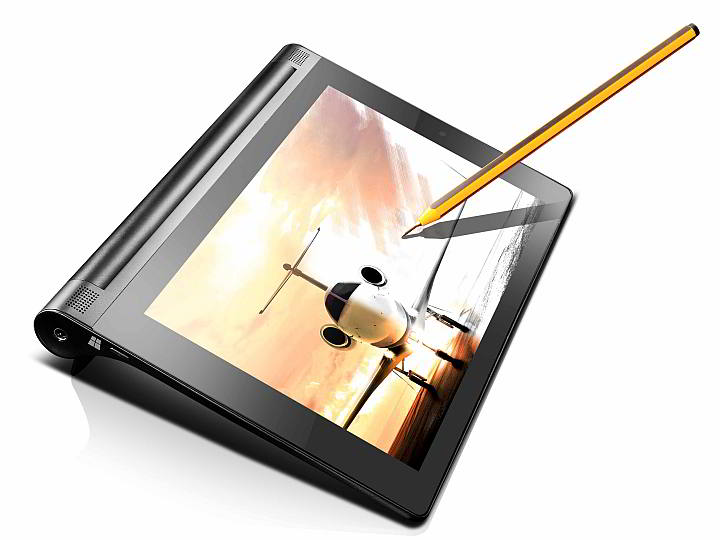LAS VEGAS — Go ahead, peek at our patents.
Toyota will allow others to use several thousand of its patented or patent-pending technologies for free to speed the development of its hydrogen-powered car dubbed Mirai, due to be sold in the US by October.
Elsewhere, would-be novelists got a new way to write as Lenovo launched AnyPen, which lets you write on a tablet with any ordinary pen or pencil. And LG unveiled a new curved smartphone.
The International Consumer Electronics Show (CES) in Las Vegas this week isn’t typically a major forum for mobile products, as many manufacturers wait a month or two for the Mobile World Congress in Barcelona. But it’s hard to separate mobile from other technologies these days.
Here are some highlights from the gadget show last Dec. 5.
VROOM, VROOM
Toyota has been working on a hydrogen-powered car for some time. But now it’s opened up its technologies to anyone, even its competitors, in the hopes of speeding the development of hydrogen-powered vehicles and their fueling stations.
Toyota executive Bob Carter compared Mirai’s development to the gamble the company took on the electric Prius, which now has become an ubiquitous sight on most roads.
“We can speed the metabolism of everyone’s research and development,” he said.
Don’t expect a rush of carmakers to line up, though. Quite a few have their own hydrogen fuel-cell cars in the works. But there’s the quandary of the car and the fuel station. Which comes first?
“We cannot have the car without the refueling stations,” he said. Toyota’s patents include 70 designs for hydrogen-refueling stations, the plans for which are also now royalty-free.
WRITE ME
Sometimes, it’s easier to write or draw something than to type. Some tablets including Microsoft’s Surface and Samsung’s Note series come with styluses to do just that, but that means having an extra item to carry around and potentially lose.
Now you can write on a tablet screen with just an ordinary pen or pencil. Lenovo is introducing a technology called AnyPen in its new 8-inch Yoga Tablet 2. Lenovo says the pen or pencil will even make touchscreen navigation easier than using a finger.
The tablet is built to withstand normal pressure, but don’t press too hard, or you might scratch the surface.
ALL IN THE SCREENS
LG’s new G Flex 2 has a slightly curved screen, as the name implies. LG says that makes phones easier to hold and the display easier to read. Even more notable is the fact that LG is also making the Flex 2 smaller than its predecessor, countering a trend toward bigger and bigger phones.
LG says it got complaints that the previous, 6-inch version felt too big. The new one will be just 5.5 inches, which LG considers the “sweet spot” for smartphones.
That’s the same screen size as Apple’s new iPhone 6 Plus, though it’s actually slightly shorter when placed side by side.
LG is also making the back of its new phone “scratch-proof” by adding self-healing properties. Scratch or nick it under normal use, and the mark disappears in seconds. The screen itself isn’t scratchproof, but LG says it’s more durable than usual with a special chemical layer applied to Corning’s Gorilla Glass.
The Flex 2 has improved screen resolution over the original Flex, at 1080p high definition, though that’s still behind LG’s G3 in sharpness. The Flex 2 also introduces some selfie features and a way to quickly check the time and notifications without turning the entire screen on.
Curved-screen phones remain a niche product, and LG doesn’t expect to ship as many Flex 2 phones as its flat G3 smartphone. A price hasn’t been determined, but it’s expected to be more than the G3 and other high-end phones, which typically cost $600 to $700 without a two-year contract.
Meanwhile, Sharp plans to release a 5-inch frameless phone—the screen goes right to the edge. It actually uses an optical-lens trick to make the front panel appear to extend to the edge. Magic or not, the trick keeps the overall phone smaller.


